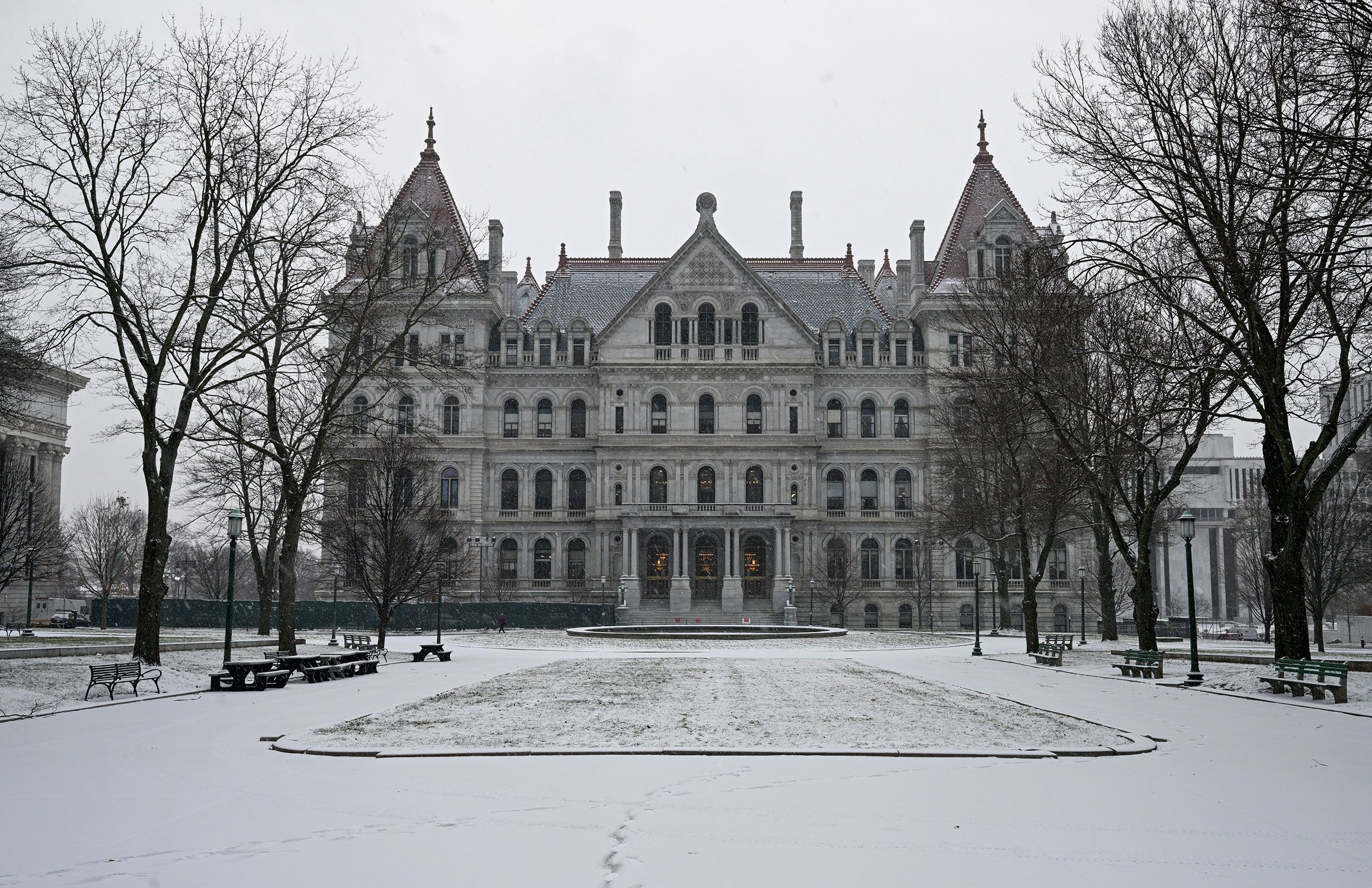The Democratic-majority New York Legislature is set to cast their votes on Monday, deciding whether to accept or reject a congressional map proposed by a bipartisan commission. The map, which offers only a slight advantage to Democrats, has sparked a debate about whether the Legislature should take control of the redistricting process. The outcome of this decision could significantly influence which party will control the US House in the upcoming year.
New York is predicted to be a key battleground in the fight for control of the House this fall, particularly given the Republicans’ slim majority. The GOP managed to secure four House seats in the state during the 2022 midterms, a victory that contributed to their control of the chamber. However, several New York Democrats have expressed dissatisfaction with the proposed map, which was approved by a 9-1 vote by the state’s Independent Redistricting Commission earlier this month.
The proposed map largely maintains the status quo in the suburbs of New York City, areas considered potential hotspots in the November elections. These include the 3rd Congressional District on Long Island, which Democrats recently won in a special election following the departure of former Rep. George Santos. The new map could potentially jeopardize the seat of freshman Republican Brandon Williams in Central New York by incorporating more Democrat-leaning territories. However, the commission’s compromise has seemingly solidified the positions of Republican Marc Molinaro and Democrat Pat Ryan in the Hudson Valley.
State Sen. James Skoufis, a Democrat, told CNN on Monday that he plans to vote against the commission’s map, criticizing the lack of significant changes to the districts and accusing the commission of favoring incumbents from both parties. “I know this has been described as bipartisan, but the way I’ve characterized it is that this is mutually partisan,” he said.
Under state law, the Legislature has the authority to review the commission’s map. A two-thirds majority vote in each chamber is necessary to approve or reject the map. If lawmakers decide to reject the commission’s proposal, they could redraw the lines to potentially swing up to six districts in favor of Democrats. However, such a move could prompt new legal challenges over allegations of extreme partisan gerrymandering, which would be in violation of the state constitution.
New York’s redistricting maps have been a contentious issue for years, leading to prolonged legal disputes following the 2020 census. A state court judge was responsible for drawing the map used in the 2022 elections after the Independent Redistricting Commission failed to agree on new lines and a map drawn by the Democratic-controlled Legislature was rejected by the Court of Appeals, New York’s highest court. Democrats, arguing that the court-drawn map should not be used for more than one election, went to court again asking for the redistricting commission to try again. The Court of Appeals, now under more liberal control, agreed late last year and tasked the commission with drawing a new map.
House candidates are scheduled to start collecting signatures for their election petitions on Tuesday. However, state legislators may choose to modify the petition process if they fail to reach a consensus on the map in a timely manner.

